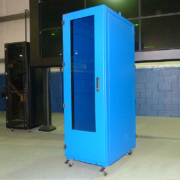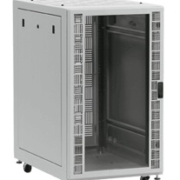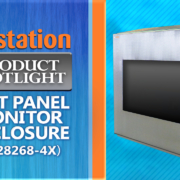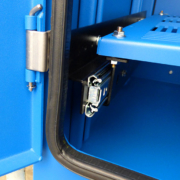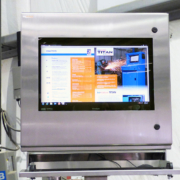Enclosures in a Humid Environment
Can electronics survive without enclosures in a humid environment?
In many harsh, manufacturing settings, printers, computers, monitors, and electrical equipment are housed in industrial computer enclosures that are designed to protect against severe, exterior environments (humidity, water, dirt, dust). However, even in a NEMA rated enclosure, liquid can enter the enclosure under a variety of circumstances. Obviously, the goal is to keep harmful elements, like moisture or condensation, out of the enclosure!
Condensation is defined as water which collects on a cold surface when humid air makes contact. In other words, temperature fluctuations between the inside and outside of the computer enclosure can cause condensation, which can make its way into the enclosure. Any moisture can damage electronics, shorten their lifetime, and affect the performance of the internal components. When it comes to condensation, corrosion or rust are also serious concerns, which will render critical electronic mechanisms useless.
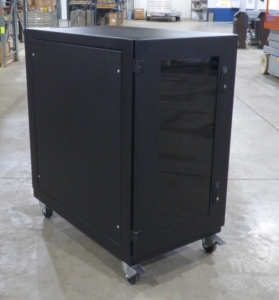 Moisture can also penetrate the inside of an enclosure through various paths – door left open, a vent, defective door latch/hinge, filtered fan system, brittle gasket, or a poorly sealed cable entry point. Plus, during a regular washdown, it is possible for the high pressure spray and cleaning solution to penetrate around the sealed enclosure doors and gaskets. If the water is not detected, mold or fungi can form in small areas and become an enormous problem. In fact, according to FEMA, mold can grown quickly, “mildew and mold will develop within 24-48 hours of water exposure. Even worse, it will continue to grow until steps are taken to eliminate the source of moisture, and effectively deal with the mold problem… Molds digest organic material, eventually destroying the material they grow on, and then spread to destroy adjacent organic material.”
Moisture can also penetrate the inside of an enclosure through various paths – door left open, a vent, defective door latch/hinge, filtered fan system, brittle gasket, or a poorly sealed cable entry point. Plus, during a regular washdown, it is possible for the high pressure spray and cleaning solution to penetrate around the sealed enclosure doors and gaskets. If the water is not detected, mold or fungi can form in small areas and become an enormous problem. In fact, according to FEMA, mold can grown quickly, “mildew and mold will develop within 24-48 hours of water exposure. Even worse, it will continue to grow until steps are taken to eliminate the source of moisture, and effectively deal with the mold problem… Molds digest organic material, eventually destroying the material they grow on, and then spread to destroy adjacent organic material.”
Naturally, it is advisable to install a “closed-loop” cooling solution for humid, moisture prone environments. Closed loop cooling systems are specifically designed to mount to an enclosure and remove heat, without letting outside air (or water) into the sealed enclosure. To ensure electronics are running at optimum levels, the closed loop system will bring the temperatures below the ambient outside temperature.
Examples of closed loop cooling systems include air conditioners, vortex coolers and heat exchangers (heat exchangers will not cool below the ambient temperature). These systems usually employ a thermostat and/or humidity control for monitoring. Closed loop systems are generally “non-condensating.” The only time condensation may occur is if there is a quick and dramatic temperature fluctuation to the system (i.e. switching thermostat from 80°F to 65°F). In fact, air conditioners and vortex coolers can often work to remove moisture from the inside of the computer enclosure.
When searching for the best enclosures for a humid environment, make sure that it is built to protect against water entering the cabinet. Obviously, water has a way of getting into the tiniest spaces if not properly safeguarded! In humid environments, moisture may enter the enclosure when the door is minimally open for quick routine maintenance.
Properly sealed enclosures in a humid environment (gasket is a plus) will prolong the life of imperative electronics. As always, downtime can be costly, so it is always prudent to keep all electronics up and running for as long as possible.
Looking for a recommendation on the best cooling solution for your enclosure? Click Here
HAVE QUESTIONS? LET US KNOW HOW WE CAN BEST ASSIST YOU! CONTACT AN ‘ITSENCLOSURES EXPERT’ AT 1-800-423-9911 -or- SEND US AN EMAIL: INFO@ITSENCLOSURES.COM

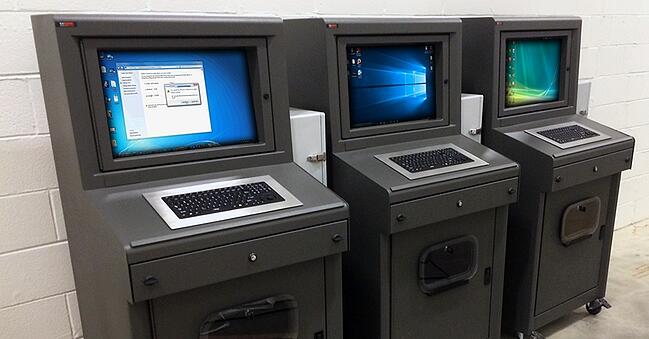 ITSENCLOSURES
ITSENCLOSURES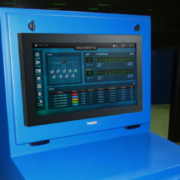
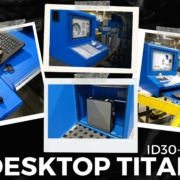 Copyright 2023
Copyright 2023 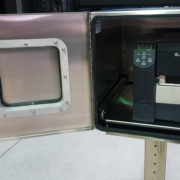 ITSENCLOSURES, 2022
ITSENCLOSURES, 2022 